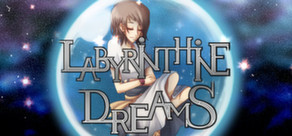 It was the late 1990s. The anime selection at the local video store was less than impressive, but it was all I had. I wandered that (small) section of Hollywood Video and came across Perfect Blue. It wasn't often in those days that you found laudatory quotes from critics on a anime film's VHS sleeve, so I was intrigued even though my expectations were netural.
It was the late 1990s. The anime selection at the local video store was less than impressive, but it was all I had. I wandered that (small) section of Hollywood Video and came across Perfect Blue. It wasn't often in those days that you found laudatory quotes from critics on a anime film's VHS sleeve, so I was intrigued even though my expectations were netural.What I got was a lurid, visceral movie chock full of ideas. This was a truly mature (and not in the "Rated M for blood and guts" way, though there's plenty of that) psychological thriller that left me disturbed, fairly confused, and utterly blown away. "This guy is a genius! (pause) Who the hell is he?"
He was Satoshi Kon, a visionary who died suddenly this week at the not ripe at all age of 47. Updated reports cite pancreatic cancer as the cause of death, and those of us who were looking forward to a few decades more of his utterly brilliant work were left reeling. His challenging, puzzling, unmistakable style meant that he would never enjoy the fame of the Pixar crew or even fellow anime giant Hayao Miyazaki, but I can assure you he was just as talented as any of them, if not more.
In an interview with Andrew Osmond, the author of a comprehensive study of his work called "Satoshi Kon: The Illusionist," Kon said, "I'm interested in trying to visualize non-linear ways of thinking in my work. When a scene in a film changes, there is usually a long shot to let you know. Suppose there's a cafe. We show the cafe, then we show a man and woman meeting there. Then we show them talking. I'm not interested in this sleepy kind of continuity. I intended to make films that didn't always tell you when the scenes changed."
 As a writer and director, he had more faith in the intelligence of a general audience than Hollywood typically does. He didn't think it was a bad thing if you had to use your brain to follow the events in his movies. This interest in an editing style based on chaotic thought patterns gave way to an obssession with how individual (or group) perception can blur the line between fantasy and reality, art and life. In his later work, he would also develop a profound fascination with dreams.
As a writer and director, he had more faith in the intelligence of a general audience than Hollywood typically does. He didn't think it was a bad thing if you had to use your brain to follow the events in his movies. This interest in an editing style based on chaotic thought patterns gave way to an obssession with how individual (or group) perception can blur the line between fantasy and reality, art and life. In his later work, he would also develop a profound fascination with dreams.This sensibility is all over Perfect Blue, which was his debut as a director (He wrote the "Magnetic Rose" segment of the anime anthology Memories). The main character, Mima, is a pop star hoping to make the transition into acting via a gruesome crime show. This doesn't sit well with some of her fans, and suddenly associates of hers are being murdered in jaw-droppingly brutal ways. Her role on the crime show is becoming so similar to her real life that she eventually loses touch with reality...and thanks to Kon, so do we. Eventually it becomes impossible to determine what is real and what is a scene on the show. After being disoriented for so long, the ostensibly happy ending winds up being chilling...there have been too many reversals to really trust anything we're seeing.
 Perfect Blue also demonstrated that Kon was willing to take on his home country. He came out swinging and took creepy Japanese double-standards about women to the cleaners. The subtext is illustrated early with a stunning shot of uber-creepy fan MeMania holding his hand out so it appears that Mima is a toy doll dancing in it. Depth perception has never been so creepy, and it's a perfect visual for how Japanese pop culture commodifies young girls. Later in the film, Mima decides to further pursue an "adult" image by posing nude in a magazine...the fandom is outraged. You're supposed to be a childlike minx, not an adult woman embracing sexuality.
Perfect Blue also demonstrated that Kon was willing to take on his home country. He came out swinging and took creepy Japanese double-standards about women to the cleaners. The subtext is illustrated early with a stunning shot of uber-creepy fan MeMania holding his hand out so it appears that Mima is a toy doll dancing in it. Depth perception has never been so creepy, and it's a perfect visual for how Japanese pop culture commodifies young girls. Later in the film, Mima decides to further pursue an "adult" image by posing nude in a magazine...the fandom is outraged. You're supposed to be a childlike minx, not an adult woman embracing sexuality.  Also worth noting is that MeMania is one ugly mother. It's like Michael Jackson tried to have surgery to look like a piranha. Kon strove for realism with his character designs, this was not the usual anime cast of bug-eyed characters who could only be distinguished from one another by gender and hairstyle. Even background characters had distinctive features totally divorced from the fantastical style often associated with Japanese animation.
Also worth noting is that MeMania is one ugly mother. It's like Michael Jackson tried to have surgery to look like a piranha. Kon strove for realism with his character designs, this was not the usual anime cast of bug-eyed characters who could only be distinguished from one another by gender and hairstyle. Even background characters had distinctive features totally divorced from the fantastical style often associated with Japanese animation. I could go on forever about the quality of the visual and thematic content of all of Kon's movies, but the most outstanding thing about them is their sheer power. In this case, Perfect Blue treats the viewer to a truly chilling buildup as Mima realizes someone is monitoring her every move and posting it on the internet. The meta-heavy seqeunce where Mima shoots her graphic rape scene on the crime show makes your skin crawl as you ponder the effect these kind of scenes have on the performers in them. The chase scenes are accompanied by blood-curdling music full of ominous chants and mumbling. The series of "Is this real?" sequences is enough to make you lose your mind.
Kon had a few less frightening movies in his filmography, and they will be discussed later. As you may have guessed, I plan on making a series out of this. Given how much his work has meant to me, it's the least I can do. Millennium Actress is up next.
On an administrative note, the Clone Saga retrospective is on hold until this is done. Priorities, people.




No comments:
Post a Comment